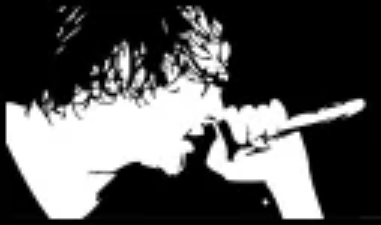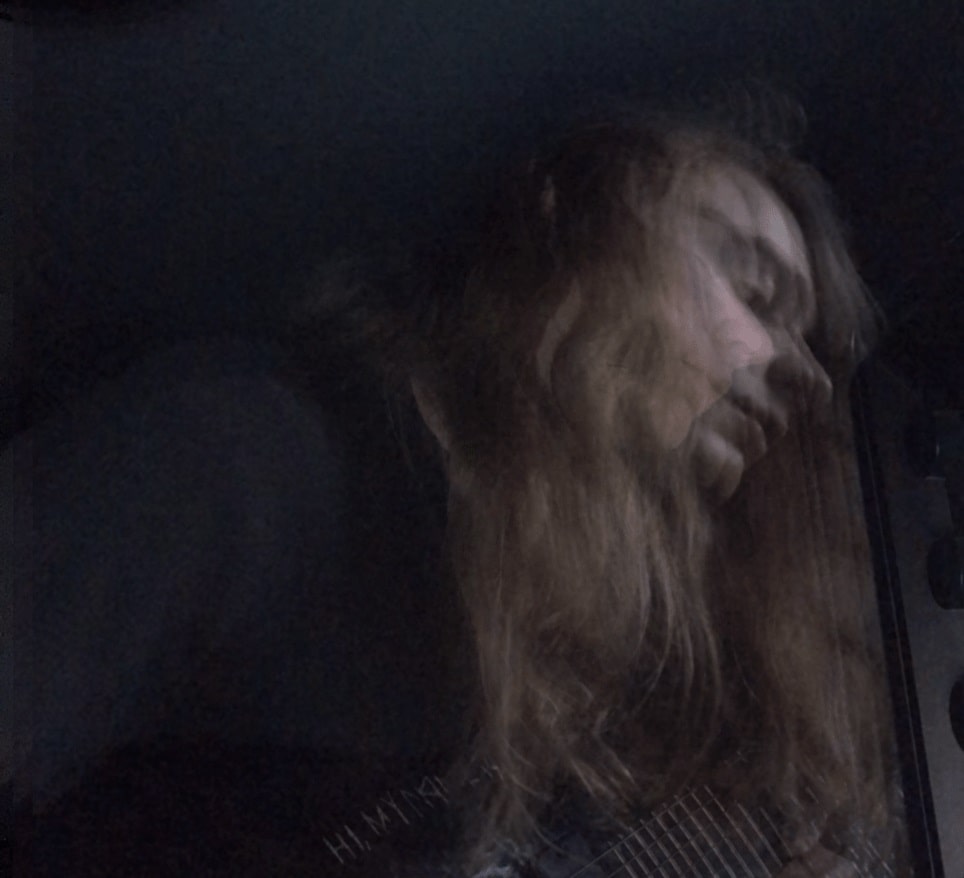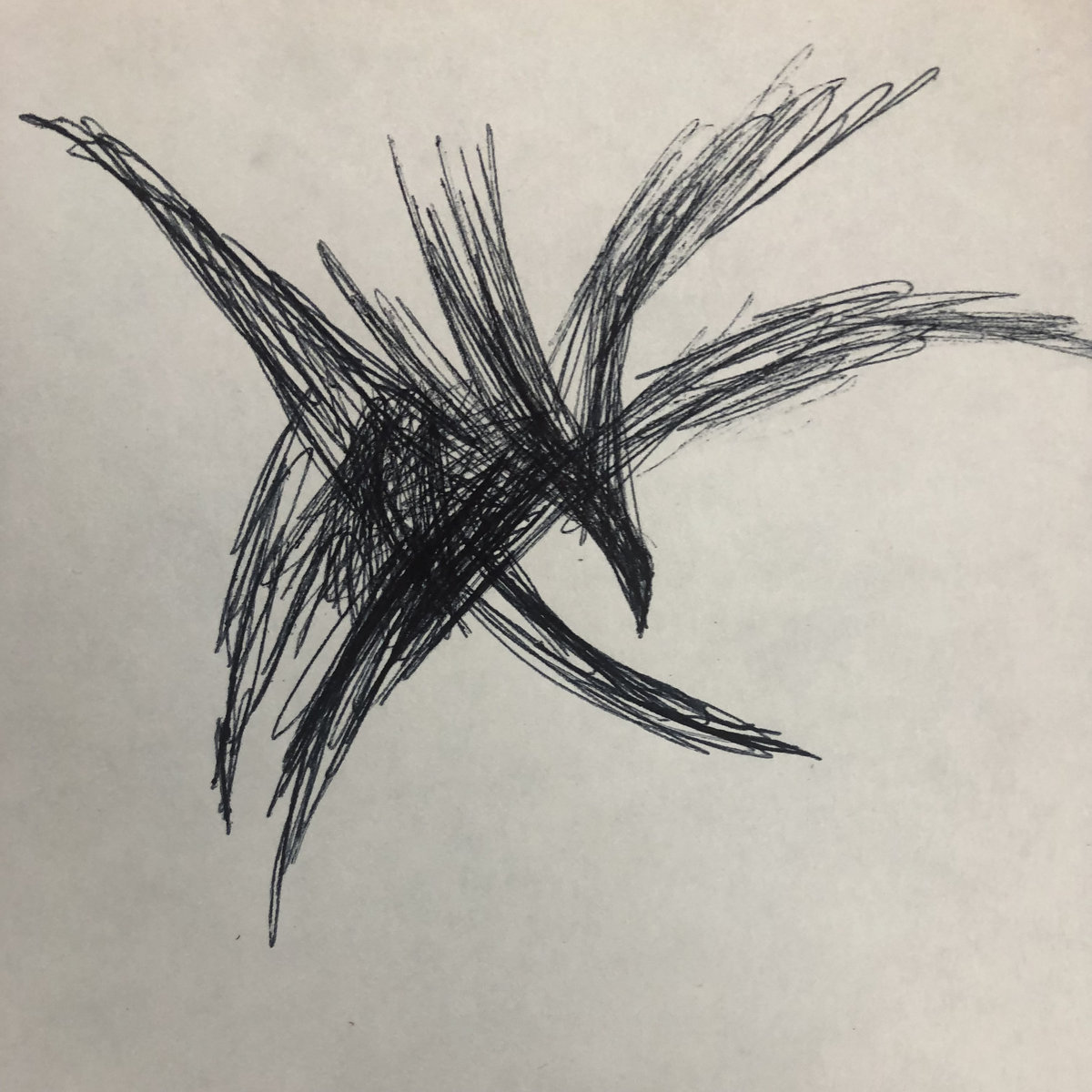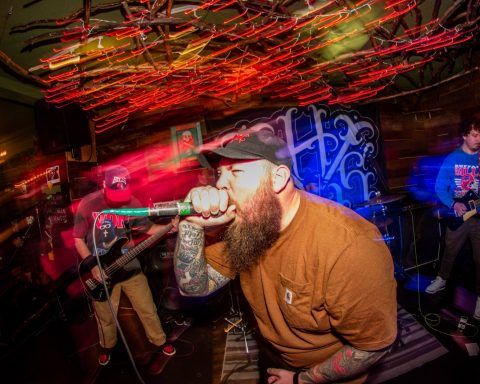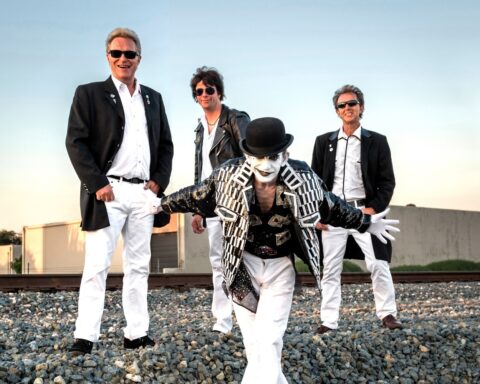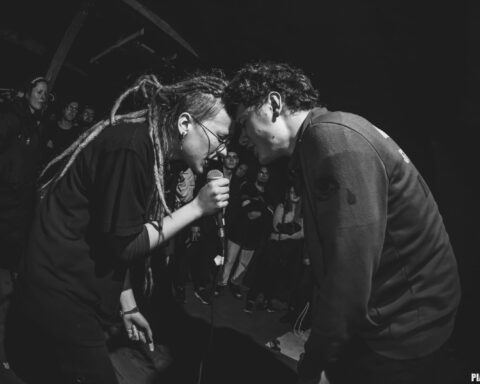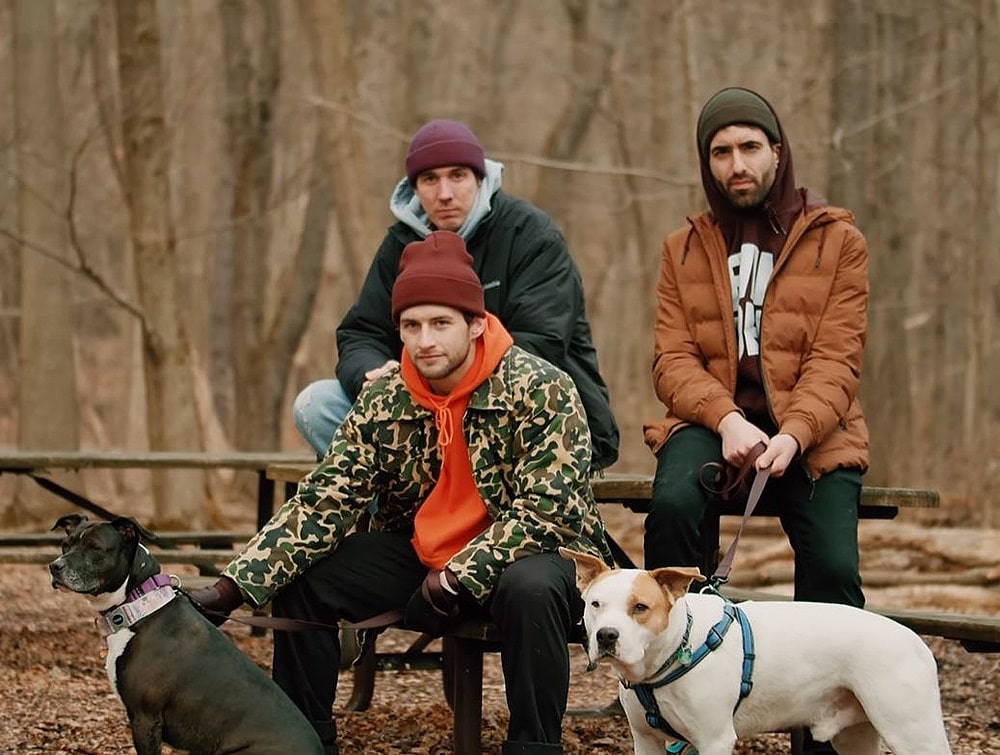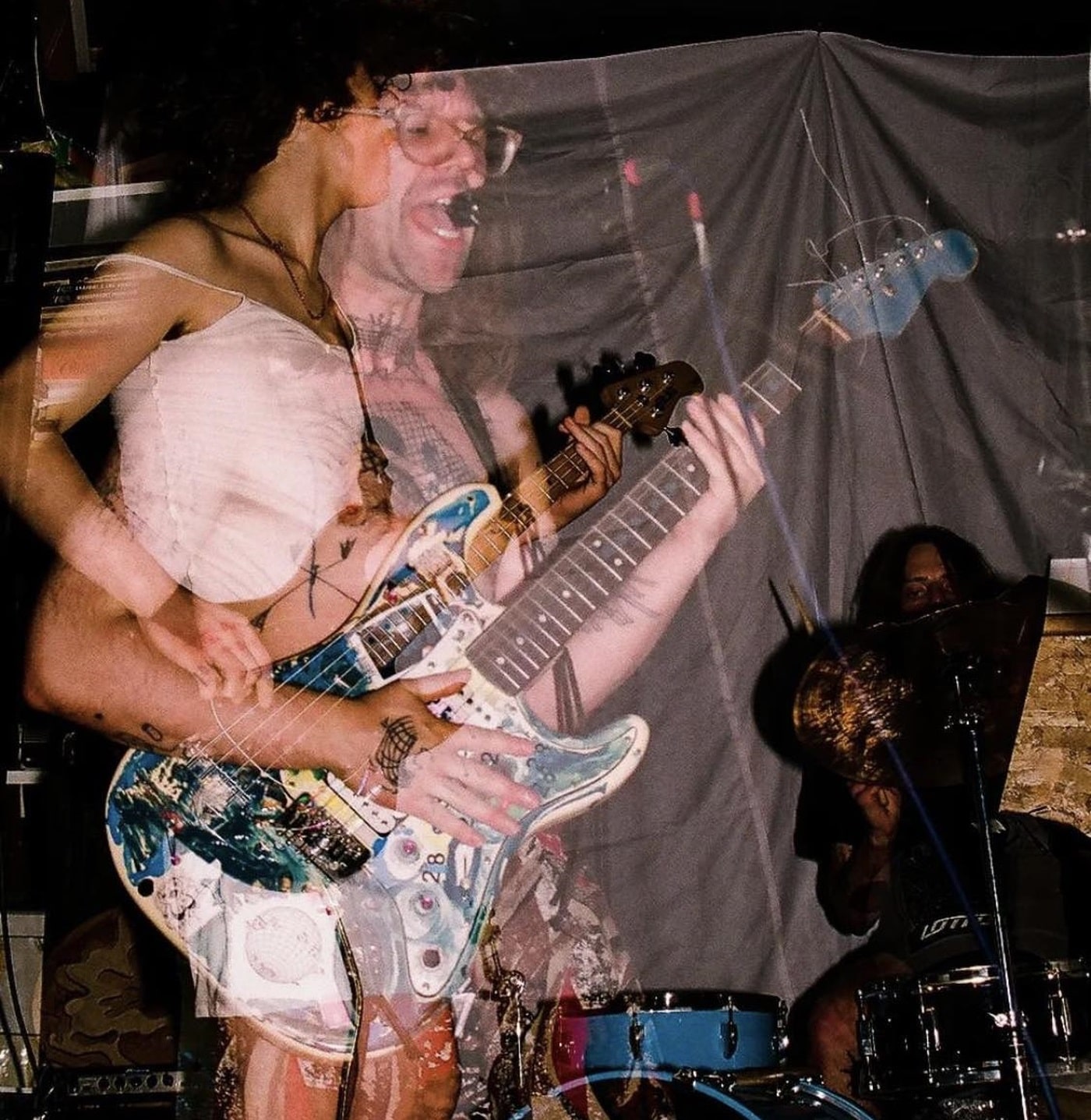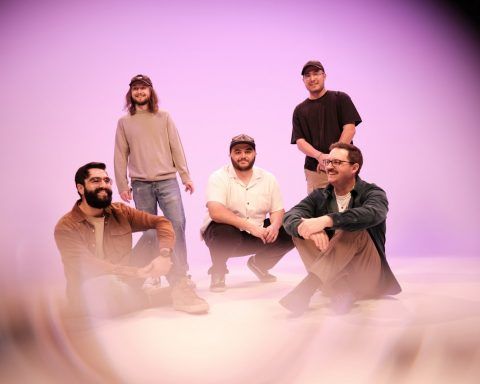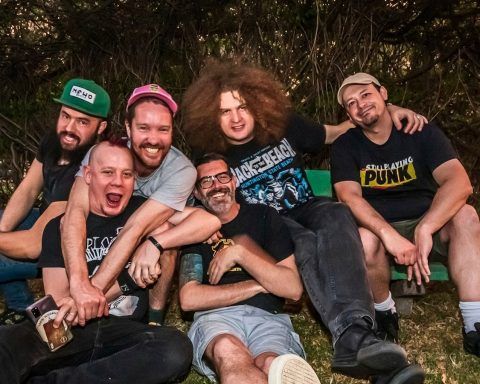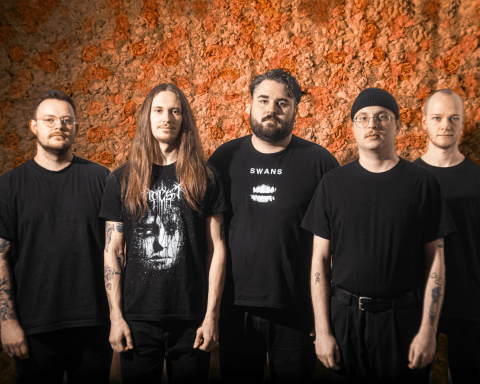As an extension to an already lengthy 11-artist interview, we sat down for an in-depth interview with Peter, also known as Son Vae, a 16-year-old freelance musician, multi-instrumentalist, composer, producer, visual artist, and writer who has just released his third self-titled album, Son Væ (also known as architecture).
This record is the culmination of all of Peter’s creative endeavors, reflecting his highest ambitions as an artist. With a focus on creating something entirely unique and idiosyncratic, Peter wove fragments of ideas dating back to some of his earliest moments as a musician into the fabric of the seven tracks on the album, making it his most complex, technical, maximalistic, and experimental work to date.
Peter created this album entirely on his own, down to the visual art, production, engineering process, and design layout, in an environment as close to a vacuum as possible, detached from outside influence.
The core material of the album began with the opener, haemophiliac, which was the first time Peter had ever featured a song on an outside source, and which led to him being interviewed for a compilation on this site. The album progresses into a kind of insanity, approaching territory that only those with a penchant for self-destruction and an open embrace of staring into the void until it stares back will have tread upon before.
The inspiration for the most complex tracks on the album came from highly experimental modern classical works like those of Penderecki and Xenakis, as well as the works of Colin Stetson. Peter aimed to emulate the things at the outer edges of experimental music composition from which he has less experience in.
During our interview, shared with us his inspiration behind creating a complex and idiosyncratic album at such a young age. He explained that he wanted to create something that reflected himself in absolute totality, something entirely unique and idiosyncratic, like an axiom upon itself. When asked about his creative process, Peter explained that he started creating the album in the summer of 2022 with haemophiliac, which was the turning point that set in motion everything that led to the record. Peter maintained a high level of technical and experimental complexity throughout the album by taking his nascent, unknowing vision of experimental music and leveraging his lack of understanding to create something entirely new.
Furthermore, Peter spoke to the significance of the Seven String guitar and the C# tuning he used on haemophiliac, explaining that it created a sort of resonant tonal center held down by the lower C#’s of the open strings, which affected the overall sound and tone of the track. Finally, Peter spoke to the influence of chamber music and experimental modern classical works on his approach to the album.
All of this and a lot more has been discussed in our insightful interview below.
What inspired you to create such a complex and idiosyncratic album at such a young age?
There are many driving factors behind my approach to technicality and idiosyncrasy as a musician. From the very beginning, I have always been interested in the mechanics behind how music functions. Even before I knew how to play an instrument, I found myself studying the internal process behind chord structures, intervals, the mathematical basis of music, and specifically odd time signatures. Odd time signatures are one of my biggest obsessions, and there is not a single track on Son Væ that doesn’t employ either very dense compound or odd time signatures or utilize arhythmic free time in some aspect. The possibilities of complex rhythmic patterns and, by further extension, polymeters have fascinated me to no end, and nothing else sparks that same kind of interest in me. The way the pulses of time signatures can constantly switch, the shifting of emphasized beats and dense syncopation, the endless possibilities, the interlocking of mind and body once a complex rhythmic pulse is felt in a physical way – it completely hypnotizes me. It feels even more incredible to play in these complex shifting time signatures, and I get an ecstasy out of it that I practically can’t live without. I simply can’t pass up the opportunity to create complex rhythm – it flows within me like my own blood.
Likely the greatest example of this is “Lightning Tongue,” currently the most complicated piece of music I’ve written and one that perfectly encapsulates my approach to rhythmic complexity. The song begins in 15/16 with a three-finger arpeggio pattern on the 2nd, 3rd, and 4th strings of my seven-string guitar. The pattern cycles between three patterns of four and an ascending pattern of three leading into each consecutive chord. This pattern then transitions into a pattern of 9/8 that introduces my thumb playing the 1st string, creating a four-finger pattern of emphasized bars of six and three going up and down the strings in a compound measure pattern based on the chords. The pattern repeats the first chord twice, extends the chord once, repeats the pattern of the first chord twice, then moves into the second chord that plays twice, and then back to the first chord twice again, creating a seven-bar pattern of 9/8. There are approximately 11 different signature changes, each with individual accent patterns. I will spare you the details of the exact specifics of the way the rhythmic shifts function, for fear of making you bash your head into your keyboards. This piece of music plays directly into my own very specific familiarities with my instrument, to the point where the song becomes a natural extension of myself and my own exact style of finger-picked guitar playing, as a vessel for my melodic and rhythmic vocabulary.
It all becomes an impossibly dense cross-section, something that I hope only applies to the function of these songs under the surface. I’m not making music for musicians, a shortcoming which all too often artists with great technical backgrounds die by. The complexity of these songs is only meant to be a means to create entirely unique musical ends, with the technical aspects only serving the songwriting and composition and cutting away all excess. That’s where the incorporation of my inherent proclivities toward the ideology of punk as an artist comes into play. There is a sense of rejection that seeds the way these songs are written, a rejection of both blind simplicity and technical pretension in a stagnant, institutionally correct forced path to what is deemed right by a set of skewed and manipulated standards, entirely sapped of personal expression and freedom. I try to create complexity by way of an anarchistic, unbound, and unstructured approach without rule or restriction, only ever advancing nuance and self-guided systems of logic. Perhaps I take a far too solipsistic approach. Regardless, I try to stake my claim as a creator, as an individual, as much as I can.
To be completely honest, there is a part of me where these compositions come from deep down that is engulfed in a deep-seated fear of failure. There’s a desperation to be recognized, to be vindicated, to not be forgotten, to make something worthy of reverence, to become something greater, to demonstrate everything I have inside of me to the maximum extent possible. Especially because of my youth and the endless possibilities I have in front of me, I feel the need to do everything I can as fast as possible. I put everything I have into these pieces because they are everything I am, and my worth is tied to them inextricably, perhaps in an unhealthy way. My creations are my purpose, and I’m desperate for some kind of greater meaning. These things haunt me, govern the actions I live by that push me to create. Maybe there is a place where I achieve everything I’ve ever wanted and am truly satisfied. Maybe this approach to perfection is a self-cannibalizing death spiral leading me into oblivion. Maybe I’ll never know either way. All I can do is try.
How did you manage to create everything on the album entirely by yourself, including the visual art, production and engineering process, and design layout?
To be honest, the nature of my complete independence as a recording musician is likely rooted in how I began creating music. I started out incredibly isolated, entirely guiding myself, especially during the onset of the pandemic which is really where my journey began. I had previously attempted to take guitar lessons as a younger kid, but I despised the process and made zero progress as a result because I simply didn’t care or get any enjoyment out of it. It was only after I dropped all of my guided practice that I very slowly began to pick up my guitar and experiment entirely by my own free will, retuning and playing heavily simplified, scrapworked fragments of songs I loved, and manipulating them on a digital workstation on my phone. I just kept playing entirely by my own volition and guidance, greatly bolstered by my underlying and greatly expanding knowledge of the function of music theory from a more colloquial and less sanitized and institutional stance, no matter how flawed it was at the time in my very early stages of writing. I always had the process of music production on hand as my means of expression, which is actually where I started making music, programming beats, and heavily distorted guitars while manipulating presets with reckless abandon and no regard or knowledge for anything other than just making loud and frenetic emulations of the noise rock and industrial hip hop I grew up on. Soon I came to form my first song, “Film Grain Distortion,” and very slowly began to hone and further myself as a vocalist as I came out of my shell bit by bit, a process I still find myself in to this day. It was through an endless process of messy, reckless experimentation that only the mind of a young teenager could produce that led me to where I am now. It was entirely about self-guidance, and I found my own path to artistry by my own merit.
Through the process of furthering myself as a producer and now being able to record and manipulate my actual guitar playing, I truly began the process of learning the actual methods of production and engineering, which has probably been the most chaotic part of my experience, and one I still have a flawed understanding of. I’ve become somewhat accustomed to the process of learning and teaching myself, applying that experience to the process of photography, image editing, visual art, and navigation of software, all of which play a partial role in my total process. The process of creating the visual art specifically is intertwined with the writing process of the music and lyrics as I sporadically create pieces of visual art by pencil or pen, set up a particularly evocative photo, and take both through the process of chaotic trial and error. The end result always manages to coalesce things together.
What was your creative process like when creating this album, and how did you maintain such a high level of technical and experimental complexity throughout?
The process of creating the album was very fragmented and sporadic across the seven tracks. “Son Væ” as an album was never actually supposed to exist. These songs were culled from multiple different points and individual projects, some of which had entirely failed, leaving the best remaining material to be refined into a specific and individual piece (i.e. “Cytokine Storm”). Some of these songs have gone through constant and endless revision and refinement over the period of almost a full year (e.g. “Lightning Tongue”), while others were almost fully completed in less than three hours (e.g. “Like New”). Some of these songs were originally supposed to be duets or were written for entirely different ensembles involving multiple people, where I would have been only a part of the equation. Some of these songs began as near polar opposite representations of the range of my ideas leading up to the point of completion. This album represents everything about my creative process, including all of the contradictions and mistakes, all of the finite moments of pure inspiration, all of the long drifts of depression and silence, and attempts to sustain myself. It all coalesces here.
That fragmented nature contributes to the consistent complexity of these songs precisely because they are entirely individual and separated from each other. Each song functions by its own different system of logic, reflecting an entirely different aspect of my personality and creative identity. These songs are all axioms unto themselves.
How has your music and art evolved since your first album, and what direction do you see it taking in the future?
My artistic process and many aspects of my life and personality have entirely changed since the release of my debut record, Siren, in December 2021. The creation of Siren was a wildly sporadic and chaotic collage of stitching together broken pieces of unfinished songs, embodied in a violent maelstrom of noise, simultaneously detached from and deeply ingrained in the extreme depression that engulfed me. What I couldn’t yet express in words, I let take shape into walls of distortion and violent bursts of ideas, culled from moments of exhaustion and insanity. The changes in my perspective since then are endless, but at the same time, I see exactly who I was in those days, and I know it’s still the same person.
I have already set in motion the future of my musical endeavors, with five different projects currently in various stages of development. I plan on furthering myself as a live musician and finally establishing a presence by playing these songs to people. I am currently setting my sights on my band, Jinx, which I am one half of with my close friend and drummer, Elise. We’ve been working on a collection of songs for a while now and slowly but surely forging a really tight connection as a band that I have very high ambitions for in the future. Furthering my identity as a musician and finding an audience are what I hope to achieve in due time. I don’t know exactly where the paths I take lead to, but I will continue to do as much as I can, hoping that the fruits of my labor will be worth the effort.
How do you balance your creative pursuits with other aspects of your life, such as school or social activities?
To be honest, my life, particularly regarding my academic future, is a complete mess. I’ve been struggling with major depressive disorder, hypersomnia, and chronic fatigue throughout my adolescence, which has severely impacted my academic performance and caused endless problems that I still haven’t found solutions to. My aspirations as an artist are far from realistic, and I need to face the reality of my situation in multiple areas. If I manage to get into a college that’s willing to accept me, I plan to major in creative writing, most likely relying on my SAT scores and non-academic writing pursuits to secure my admission. After that, I plan to pursue a professional writing career to ensure my success outside of music, where success is never a guarantee.
Can you talk more about the significance of the Seven String guitar and the C# tuning you used on haemophiliac, and how that affected the overall sound and tone of the track?
I used multiple tunings throughout the record. My fretless bass stayed in C# standard, with every string three semitones down. Meanwhile, my seven-string guitar had an alternating system of dropped tunings, being in drop B but mostly staying in drop C# with a capo on the second fret. The only exceptions to the drop C# tuning were “hæmophiliac,” “like new,” and “in concentrics.” “hæmophiliac” used a C# Trivial tuning, containing two C#2 bass notes, two C#3 mid-tones, and the top three strings playing the C#4 high-tones, which were mainly what was heard on the song. “like new” dropped the capo and was played in B standard, the factory tuning for most seven strings. “in concentrics” was played in D# standard, creating a direct counterpoint to the bass in the introductory section by playing everything the bass was playing adjusted two semitones up, creating even more dissonance and atonality in the already extremely dense progression. The few moments where my acoustic guitar makes an appearance are in its usual tuning of drop C#, which is what I wrote “lightning tongue” on originally, and standard tuning.
Regarding the C# Trivial tuning used to create the second section of “hæmophiliac,” I believe it was actually the first thing I ever wrote on my seven-string guitar, entirely separate from the first section of the song at first. Taking the tuning from Women’s technique, I think the beginning of it actually started with the guitar line on “Eyesore.” You can hear it in the beginning of the second section, reversing that original arpeggio that opens “Eyesore” in a move I think began as an unintentional interpolation, but now I try to wear on my sleeve as a moment of taking my inspirations and making something new out of them. The functionality of Trivial tunings allows for the smaller intervals of a chord or scale to be arpeggiated and segmented off into subsequent patterns, as well as allowing harmonic doubling or tripling of specific notes to create greater emphasis and texture on specific notes. The section begins with the ascension of a C# Phrygian scale (something I had to research directly before writing this to fact-check myself) but begins to deviate into more chromatic denominations and switch to different scales, all anchored by the fifth string always playing a C#4. Ultimately, regardless of any scales or chords or theoretical basis, the second section of “hæmophiliac” proves to be one of, if not the prettiest things I’ve ever written to my ear, holding this weightless elegance that ended up perfectly contrasting so much of the record.
How did your experience using the digital audio workstation Reaper impact your creative process, and what specific features of the software did you find most helpful?
Reaper has become an integral part of my creative process in the year since I began using it with hæmophiliac. It forced me to further my knowledge of production beyond the simplified and less articulate layout of my previous mobile digital audio workstation, and allowed me to immerse myself in this vast ocean of new knowledge and ideas that I still find myself wading through. So many different techniques ended up forming the basis of the sonic identity of the record, including the ability to manipulate the positioning of individual tracks in a simulated space, the ability to more closely manipulate specific tracks on a microscopic level with volume cuts, brief reversal and playback speed effects (all relatively elementary ideas made more precise), and more in-depth frequency equalizing. Frequency equalizing proved to be one of the biggest challenges in producing legible, articulate recordings with my very primitive and somewhat faulty recording tech, which is a dual combination of my partially blown-out phone speaker and my half-functional laptop speaker that fires off higher hissing frequencies that prove incredibly difficult to eliminate.
Can you speak more to the influence of chamber music and experimental modern classical works on your approach to this album?
The influence of chamber music and other forms of modern classical is a somewhat nebulous but necessary piece of understanding in how these tracks are actually composed. The integral piece of this process was the way I used my fretless bass, especially from “Cytokine Storm” onward. I tried to emphasize the more acoustic aspects of the strings, elevate the emphasis of chord structures and interval interaction, and refract the compositional elements into a much larger space of reverberation, like an orchestra in an endless valley playing through a storm.
Naturally, “Cytokine Storm” is the pinnacle of this approach, the most in-depth in terms of progression and structure regarding the chords and melodic movements. All of the songs on the record strike a balance somewhere between direct composition and self-guided improvisation, and “Cytokine Storm” was meant to superimpose between both, playing directly to the density of the chord progression but rhythmically flowing in an entirely open and free way like a tidal wave, receding and blooming back and forth through the motion of all four of my fingers in a constant and consecutive downward fingerpicking pattern, leaving the song in a constant moving state of rhythmic limbo between a constant 4/4 pulse that ebbs and flows in and out.
The influences of works of modern classical and jazz composition go between both modern classical works and other works not directly within the classical or jazz sphere but directly influenced by them, taking on multiple forms. The textures of songs like “In Concentrics” and “…Radio” were an interpretation of Penderecki’s “Threnody For the Victims of Hiroshima” and methodologies pertaining to that of Sonorism. While “In Concentrics” and “…Radio” don’t necessarily employ the tone clusters of Sonorism, the emphasis of texture, articulation, and free-form motion are all somewhat informed by the compositional style, if only in somewhat superficial and theoretical understandings.
I am not on the level of a traditional composer, and I don’t at all claim to be. I may be grappling with concepts which I have yet to gain the capacity or context to understand fully. However, I am always trying to further myself as an artist as much as possible and understand as much as I can. I will immerse myself in the depths of knowledge alongside leviathans of thought, even if I drown as the small and young fish I am (in the context of this unnecessary and half-functional metaphor).
How do you think your lack of understanding of certain experimental music genres allowed you to create something entirely new and unique?
I have spent most of my young life exploring music with great tenacity. This has led me to acquire a considerably vast repository of knowledge on the genres and areas of music that I’ve focused on, giving me an expansive knowledge of music in general. However, like anyone, I have multiple blind spots and areas in which my knowledge is still undeveloped and inexperienced, most notably Jazz and Classical music. Jazz is less of a blind spot for me as I have at least a functional understanding of the development of the Avant Garde in Jazz Music throughout the 20th century. Classical music is my real blind spot, as I have much less of a background in older forms of music dating back to before the 20th century. My knowledge of experimental music is inherently rooted in contemporary terminology, especially the development of industrial and electronic music beginning with the techniques of Futurism in the late 19th century, another genre I have yet to fully explore and understand.
Classical music and the development of tonality and composition that has led us to the current point of how music functions on a structural basis today is what formed the basis for the beginnings of musical experimentation. Thus, it is a piece of the equation in which the gaps in my understanding are filled by my own experiments and interpretations of compositional experimentation. I believe what brings me to a unique disposition in my compositions is that process of following the path of tonal experimentation while simultaneously approaching the cutting edge of aesthetic and sonic experimentation achieved through new techniques only possible with current technology. That disposition is what creates something new.
How important is it to you that your music elicits a certain emotional response or experience in the listener, rather than just being enjoyable or catchy?
Obviously, I always want the things I create to be enjoyable and, to some extent, catchy. Even some of my least accessible influences and favorite pieces of experimental music have multiple points of directly memorable and repeatable moments. This Heat’s “Horizontal Hold” is effectively an extended 7-minute piece of ear candy for fans of extreme noise rock like me. Coil’s “The Ape of Naples” has some incredibly infectious instrumental parts like the bassline on “Teenage Lightning 2005” (a cover of which is the first song I uploaded to my Bandcamp that is still publicly available), or the saxophone lines on “Amber Rain”. The resonant loops of endless repetition giving way to mind-altering grooves on Colin Stetson’s “All This I Do For Glory” are equally infectious, just not in a traditional way. I think the nature of what makes music “catchy” is entirely nebulous at a macro level, and those with experience listening to music more on the fringe of accessibility will begin to realize that.
However, the most important aspect of what I aim to achieve is emotional catharsis. I’ve thought about this for a long time in regards to my ultimate ends as an artist, and I’ve come to find that I want to make people experience emotion in a way as deep and as heavily as I have with the music that has changed my life. I’m a very obsessive person, and when I fall in love with music, it becomes a snapshot of everything I am for a moment, and nothing else feels like that to me. If I can do that for just one person, I’ve served my purpose.

